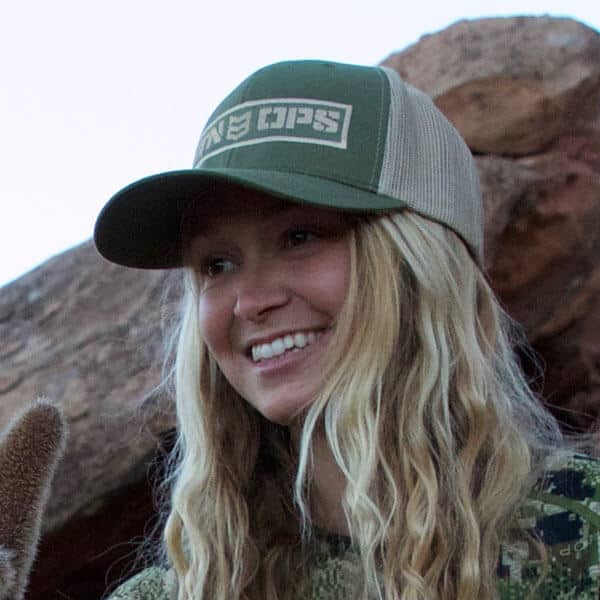My Moose Hunt Journey
February 27th, 2023
9 minute read
This past fall, I had the opportunity to work in Alaska for the entirety of September. I made the tough decision of leaving my home state of Utah to gain experience hunting moose in Alaska with my boyfriend, Hunter. Hunter is a licensed guide in Alaska, and I worked alongside him as an apprentice guide. Alaska has strict rules on guiding, and you must apprentice a registered guide for a couple of seasons before you can get your license.
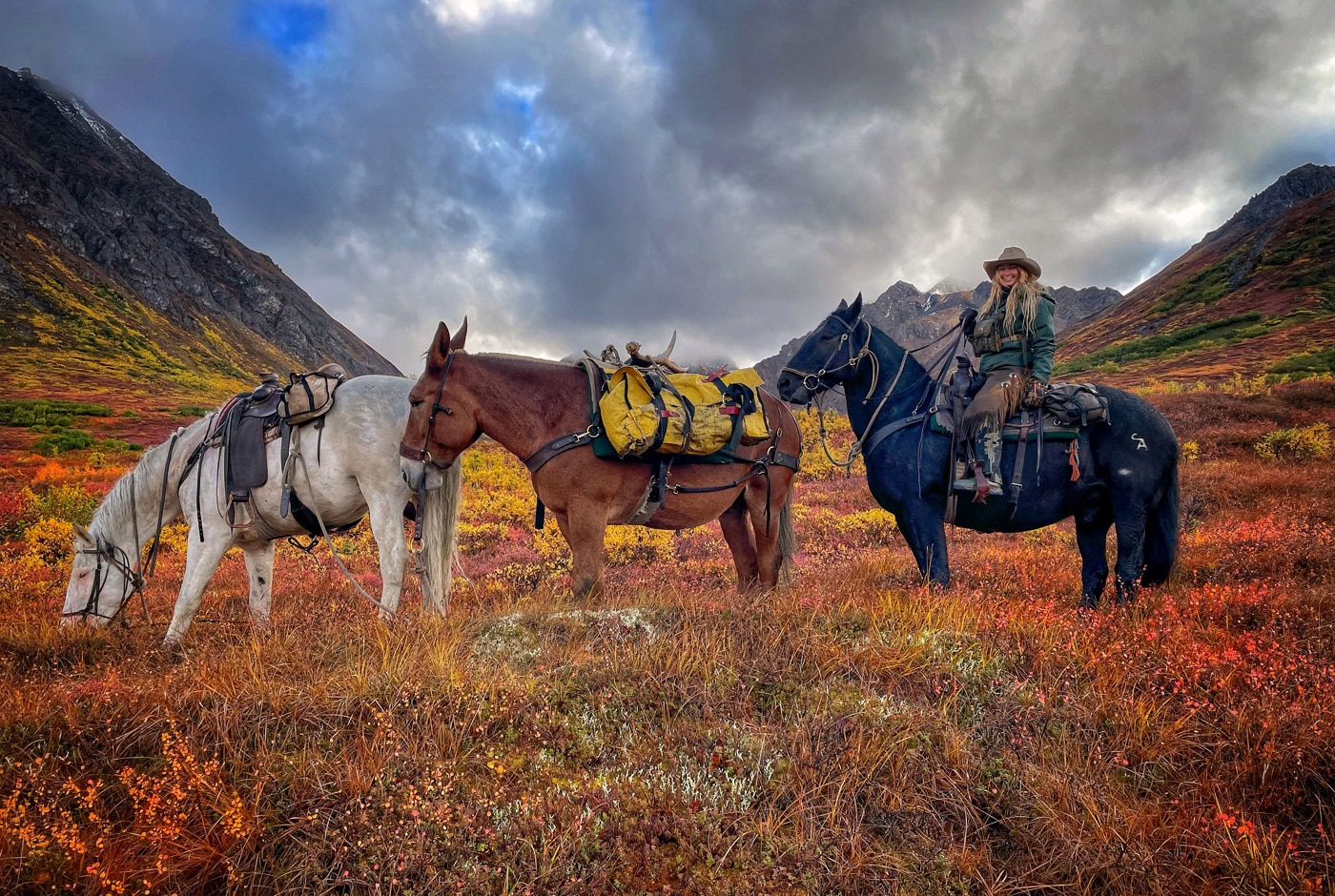
We started our journey with a one-way flight to Anchorage in late August. Upon arrival, we grabbed some last-minute items and prepared to be out of service and off-grid for all of September. The moose hunt was open from September 1st through the 25th, and we headed out to moose camp a couple of days early to prepare for the arrival of clients.
A Demanding Environment
Moose camp was in a desolate spot only accessible by bush plane or horse. We departed on horseback in late August and managed to do the 30-mile horse ride in about 10 hours.
The ride was treacherous. We went through deep bogs, roaring rivers and rocky creeks, but we survived and rolled up to the camp spot just before sunset. I was rewarded for my rough ride with a giant moose shed lying alongside the river right before we arrived at camp. To be honest, that alone made it worth it. It was lying along the glacial river like it had been waiting for me all year!
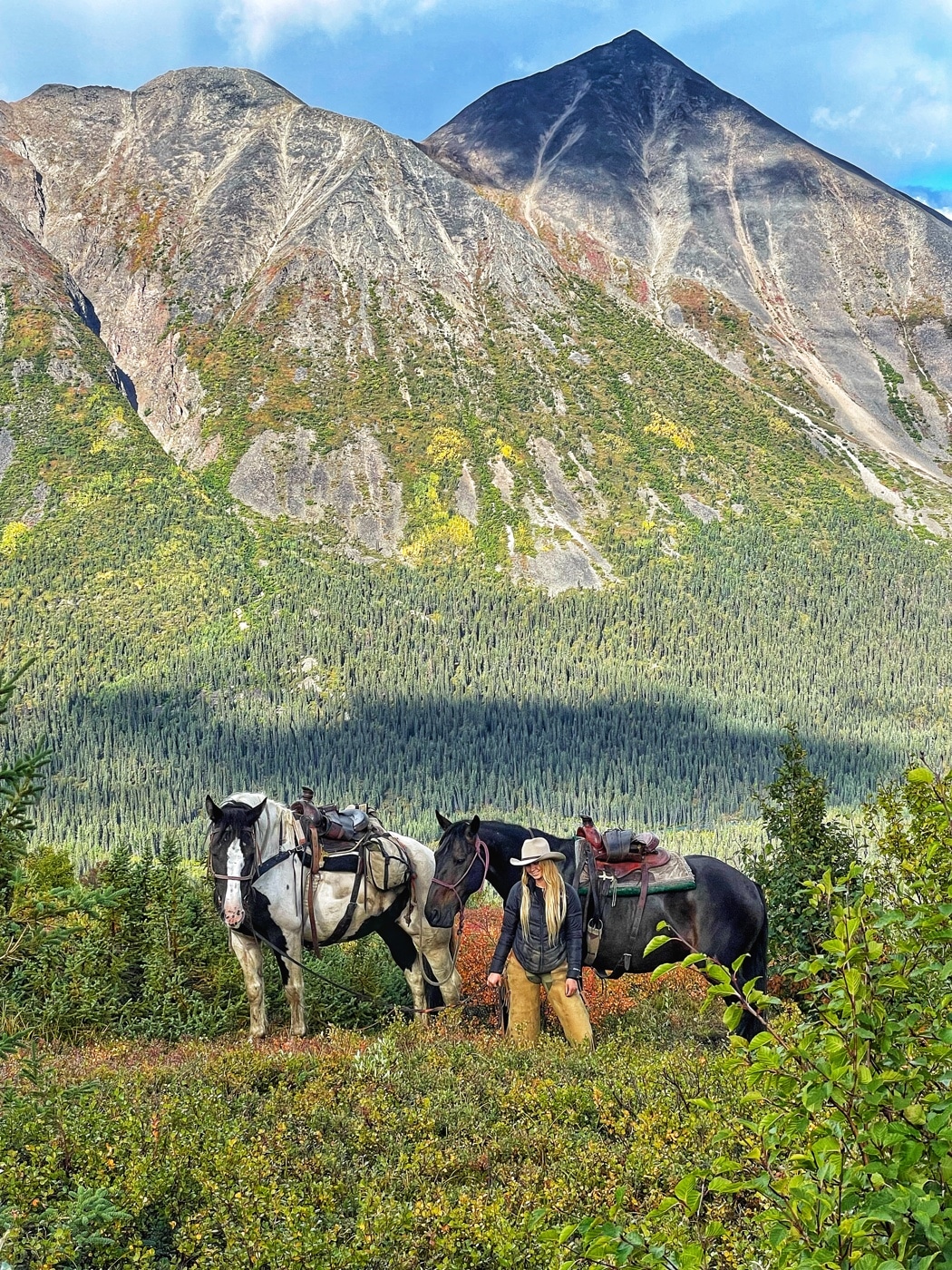
As it was getting dark, we had just enough time to throw up some tents and go to bed. The next day, everything hurt. I had never ridden a horse in such sketchy terrain, or for 10 straight hours in a row! While I was sore from my head to my toes, it was time to set up wall tents, cook tents, and other amenities for the clients that would be flying in by bush plane in a few days.
The year prior, I had spent September in Alaska hunting caribou by myself. I was rewarded with a beautiful bull on the last couple of days of the hunt. During that caribou hunt, I spotted a lot of great bull moose, and I was very excited to spend more time in moose country this year. We were able to spot moose, grizzly bear, Dall sheep and caribou right from camp.
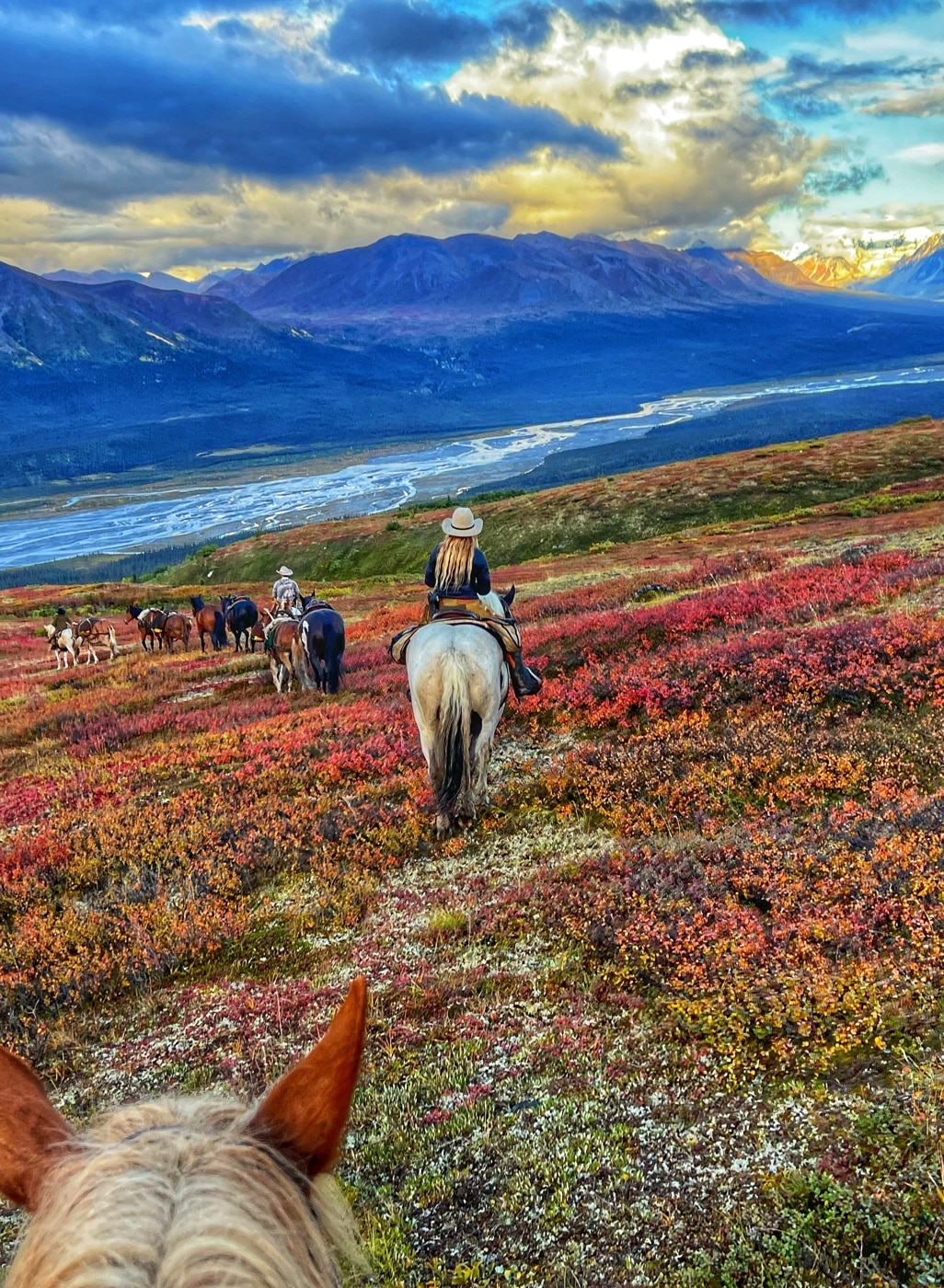
Hunter and I had two clients for 15-day hunts and we were able to help them both fill their tags. The first client scored a giant 63” wide bull towards the end of his hunt. Hunting moose from horseback was a fun and unique experience. The horses are machines, and it’s hard to imagine hunting giant animals like Alaskan moose without their help. Every morning we’d take them up the mountain for a two-hour ride to the glassing knob. These horses pushed up steep faces in knee-deep mud like it was easy.
In Our Sights
The secret to killing big moose is spending time behind the spotting scope and binoculars. Moose are giant and afraid of nothing, therefore their curious nature and confidence can get them in trouble. Some days we would ride up to the glassing knob and a bull would show itself through the trees as it was trying to take a peek at our horses. Most of the time these were smaller bulls, some legal and some not.
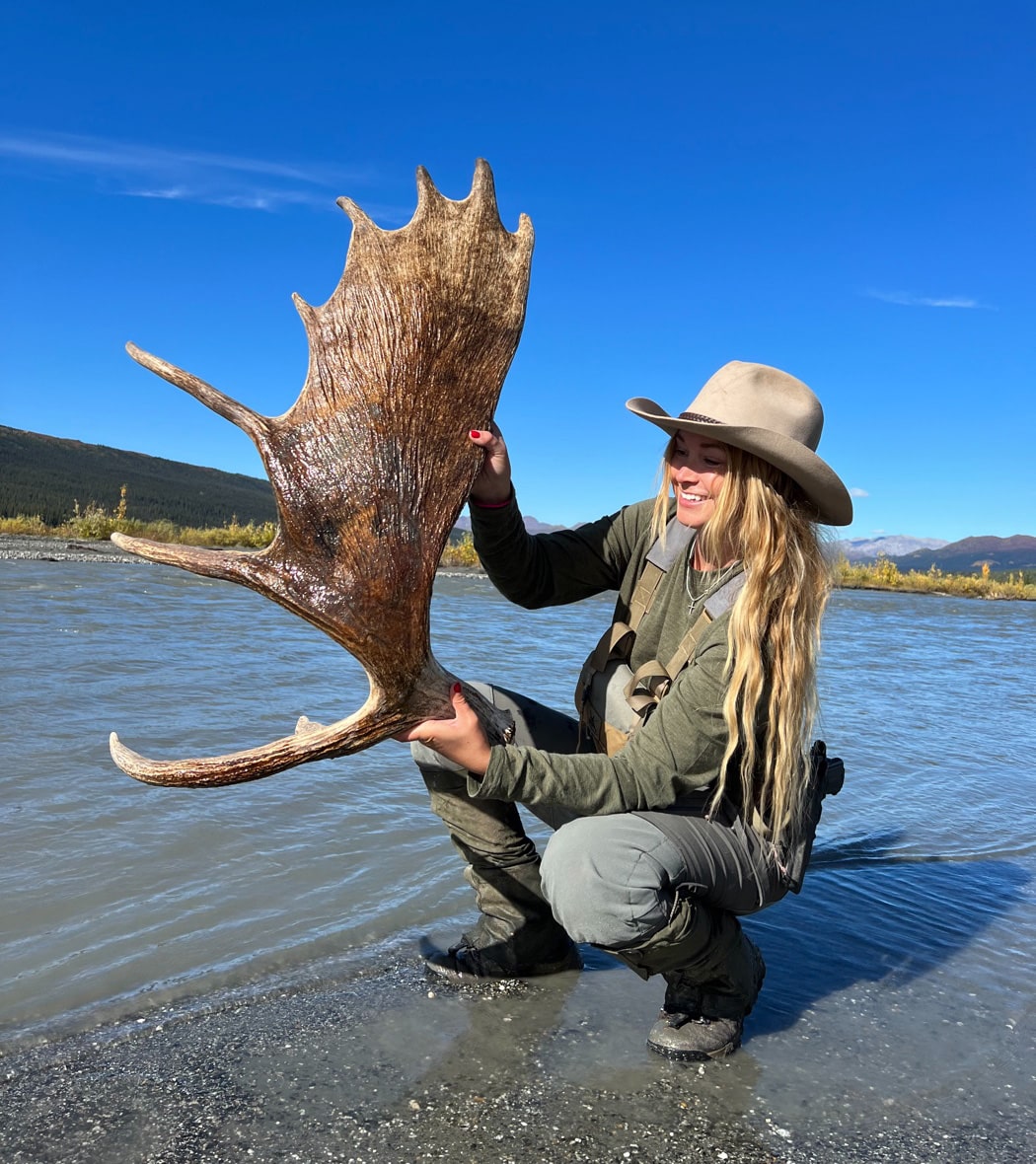
Every tag and area varies, but we were hunting bulls that had to be 50” wide or have four brow tines on one side. Unless a bull is obviously way wider than 50”, it is much safer to count on the four brow tine legal limit. Hunter spotted the giant 63” bull one evening before dark. We were glassing when this bull started pushing a cow through the trees. They were around 600 yards away and we only saw them for a second, but it got us excited because he was HUGE!
We left on our horses that day hoping we’d get to see that bull again sometime. A number of days later, Hunter was in front on his horse when he spotted the bull again. To our surprise, he was in an open meadow just 300 yards from us this time. Hunter worked with the client, and I tied up the horses and mules as fast as I could. The client let off some shots, and the bull went down. It all happened in just a couple of minutes.
A Titanic Target
Alaskan bull moose weigh roughly 1,400 pounds on the hoof. Because of their sheer size and strength, it’s a safe bet to keep your shot as close as possible. For all our clients, shots were under 350 yards. The nice part about hunting moose is once you have a shot, they make for a giant target. Just like any other game animal, aim for the heart or lungs for the most ethical kill.
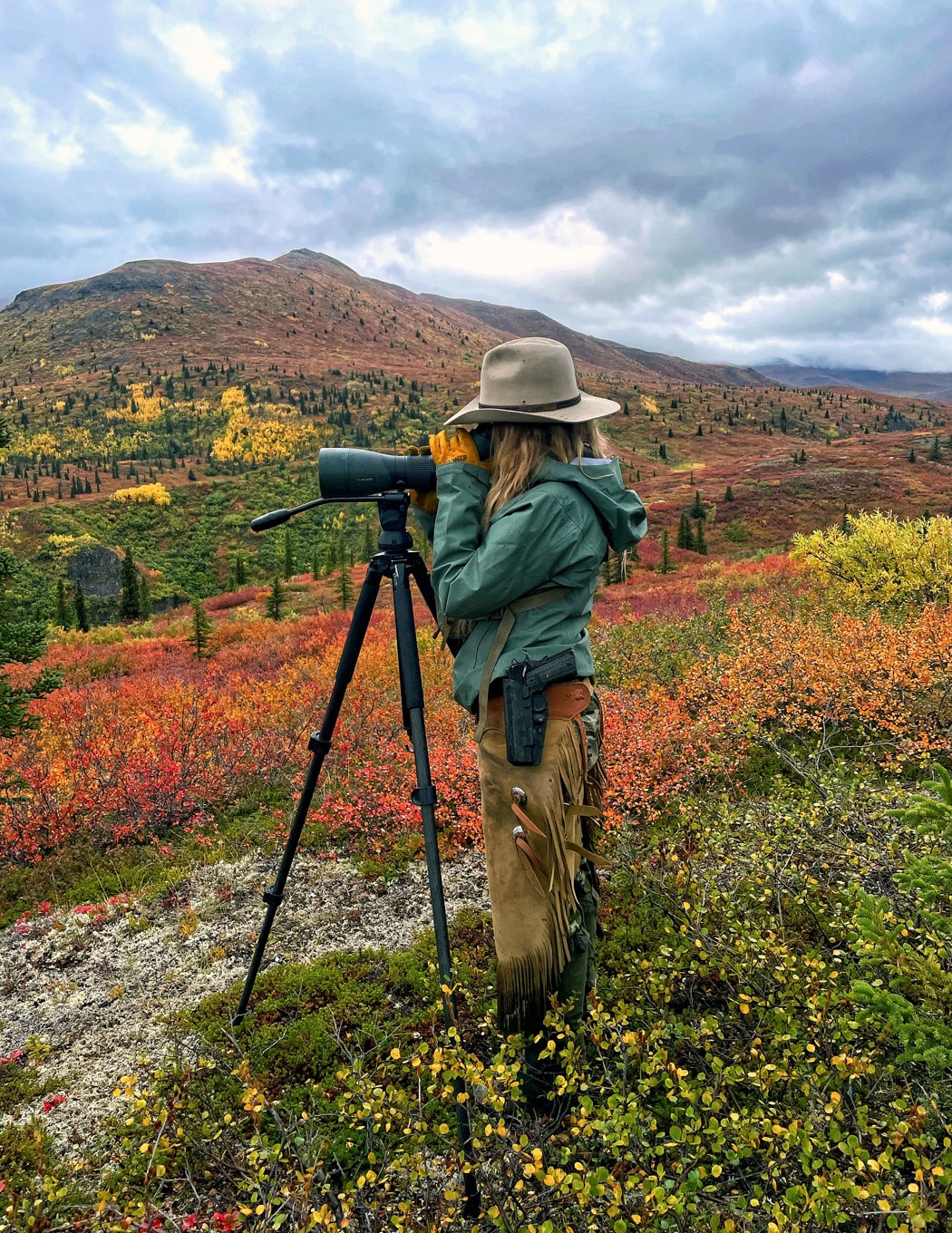
We approached the moose and were blown away by its size. This was my first time walking up on a bull moose. This thing made our horses look small! The hardest of the work began and we had to quarter out the moose and cut up all the meat before we headed back to camp.
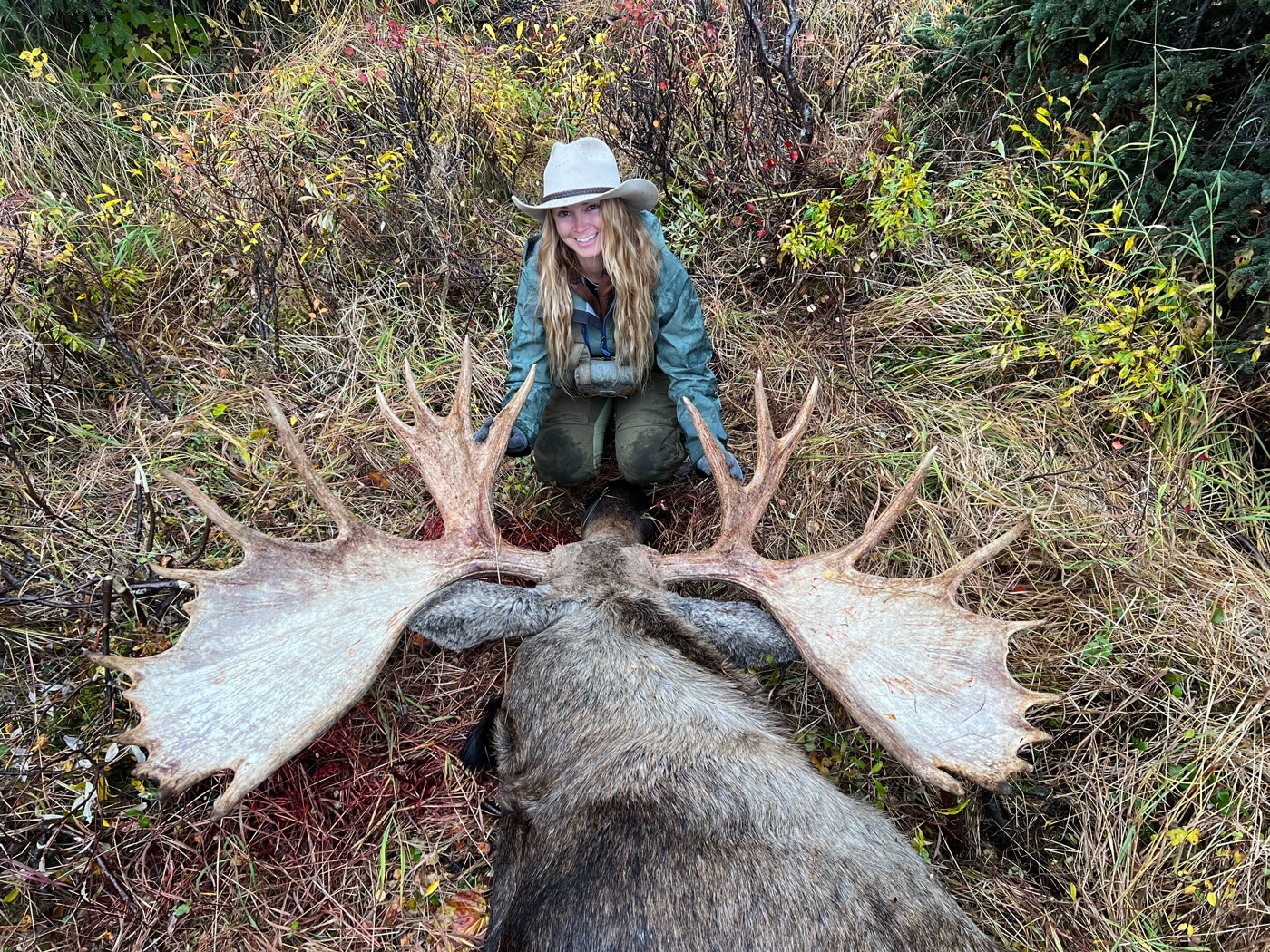
A moose fills up panniers on four mules, so the standard procedure is cutting up the entire moose and then arriving the next morning with the mules to pack it out. The client shot the moose during the early evening, and we were on the mountain cutting it up until 2am in the pouring rain. We then chopped off some pine tree branches to cover and hide the meat from the birds. This also helps keep the grizzlies from finding it.
My Other Partner
Because of the grizzly population in Alaska, I choose to carry the Springfield Armory 1911 chambered in 10mm. We indeed saw grizzlies or grizzly tracks every day, so I never went anywhere without my sidearm. When I was on my horse, I had it always attached to my leather belt and on my hip. When I was off my horse hiking with my backpack, it was holstered on the hip strap of my backpack. It’s more common than you think to get attacked by a grizzly in grizz country. So if you decide to do a trip like this, you should consider carrying an appropriate sidearm and be properly trained in its use!
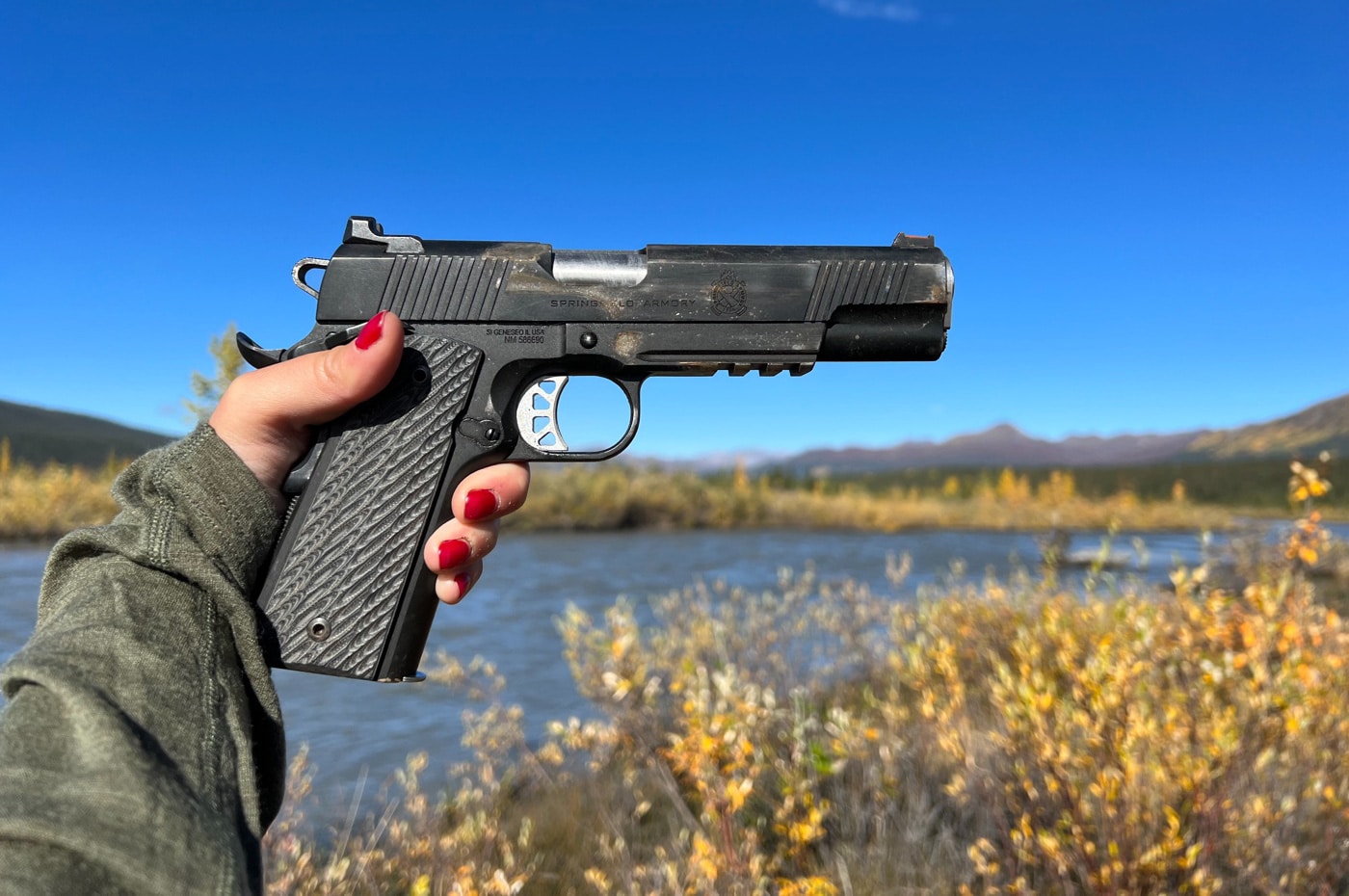
We arrived the next morning with a string of mules. Loading the meat is still a timely process. Each pannier must weigh the same on either side of the mule or it will tip and slide on the pack saddle. After loading all of the meat, we started our long journey down the mountain.
Throughout the 30 days at moose camp, we only saw sunshine for two of the days. The damp, wet weather was harder to deal with than I expected. Sometimes it would rain all day and all night; it was incredible.
Hunting moose in Alaska during September takes place during the rut. Although we saw a lot of bulls pushing cows, the rut was not as hot as we expected. Despite the miserable rain, temperatures stayed pretty mild throughout the month; the moose likely needed a cold snap to really get fired up.
My Advice
If you want to hunt moose in Alaska, I’d plan on bringing a lot of rain gear. Every day I wore base layers and midweight hunting pants topped off with waterproof pants. Up top, I wore a fleece base layer long sleeve paired with various down jackets and rain jackets depending on the day.
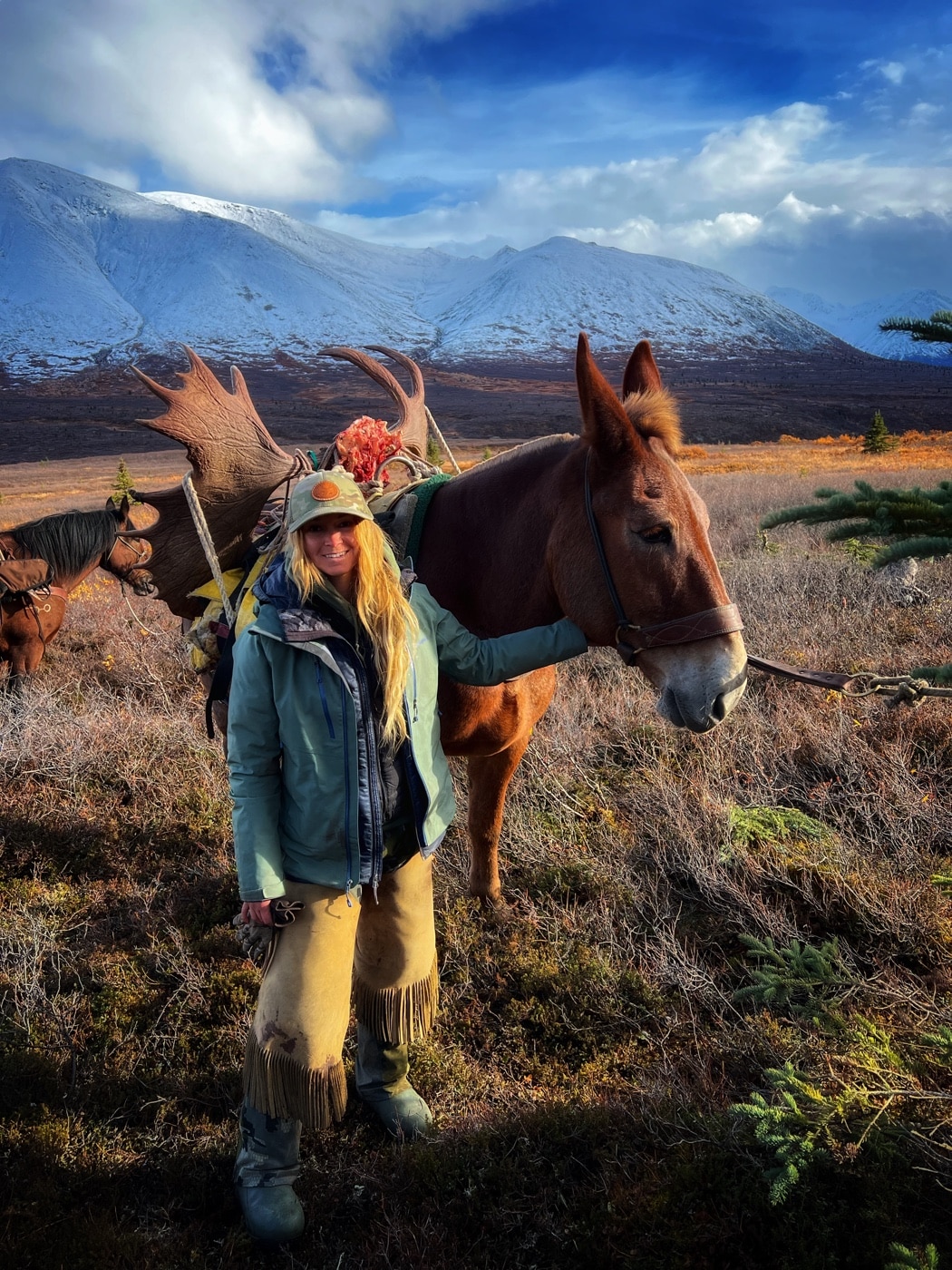
Additionally, plan on spending a lot of time behind your binoculars and spotting scope. The good news is that moose are giant animals and they genuinely aren’t that hard to spot. The bad news is that they like to live in thick alders and timber. There were several times I spotted giant bulls and they only showed themselves for a split second. With more and more time behind the glass, you’ll get used to looking for paddle flashes in the timber.
The moose paddles are so big that as they move through the thick stuff, you can be lucky enough to catch a glimpse because their giant, bright paddles give them away. Besides that, their grayish bodies stand out when they are in the alders. In September, the alders are a variety of beautiful fall colors like orange, red, and yellow. A giant bull can be easy to spot in a field of color if he makes the mistake of feeding in an opening.
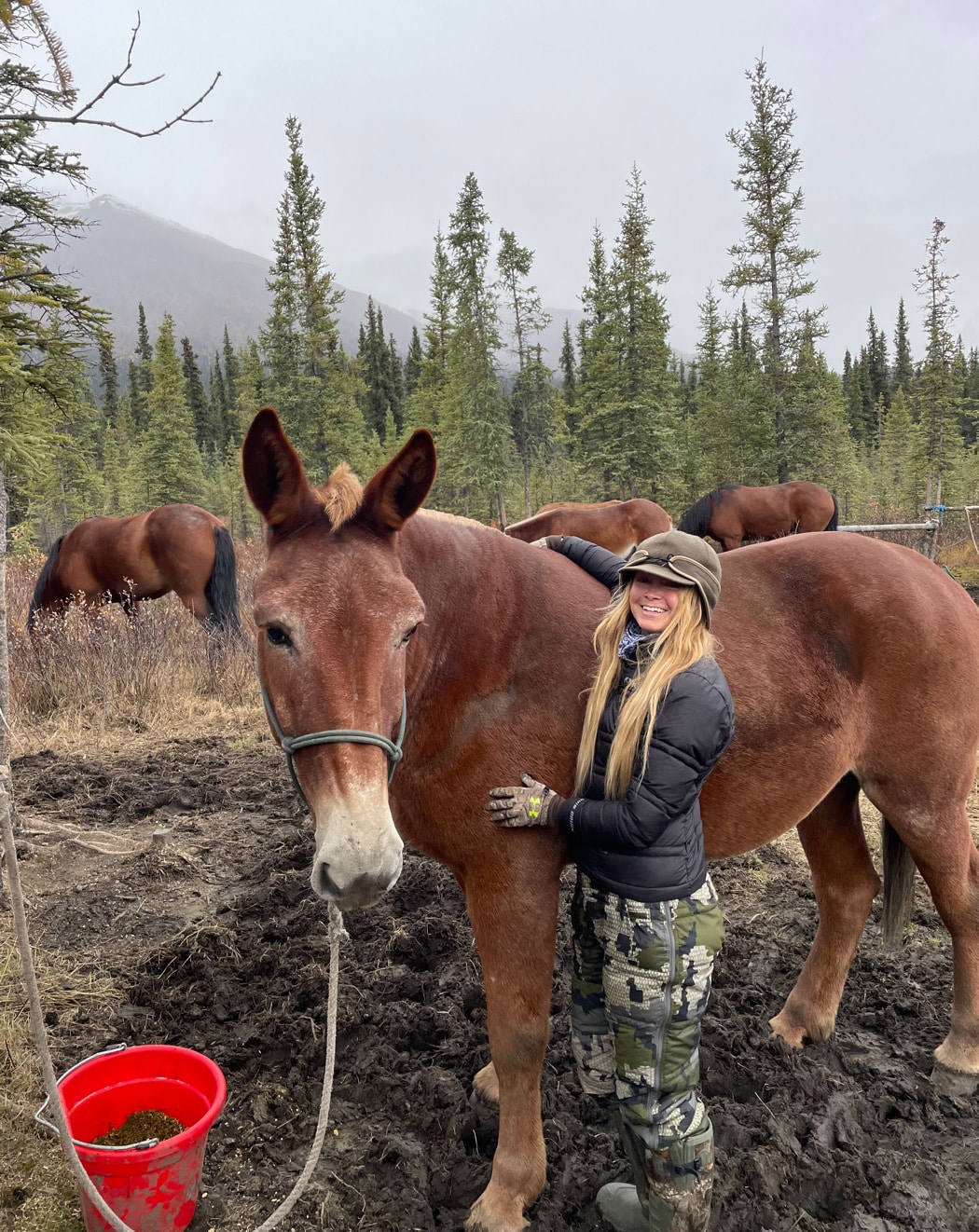
Many people find success calling moose during the rut. We did some calling, but honestly, it wasn’t as helpful as I thought it would be. The country is so big and glass-able that all our opportunities came from great spots from Hunter or me.
My next piece of advice would be to be prepared for the pack-out. Not everyone gets the opportunity to hunt moose with horses and mules. There is no denying that mules make the pack out easier because they are carrying the weight, but there are still challenges that go along with it.
Depending on how many people you have, cutting up and processing the bull is about a half-day job. Packing it out takes an additional day to a day and a half with mules. If you were to carry a moose on your back, I’d hope you had an army of friends to help. A hind quarter can weigh roughly 150 lbs. Front quarters are still over 100 lbs., and on top of two of each quarter, you have two backstraps, two tenderloins, ribs, roasts and everything in between. Alaska has strict meat rules, which I admire. The hunter leaves behind just some bones and guts from their harvest, and that’s it!
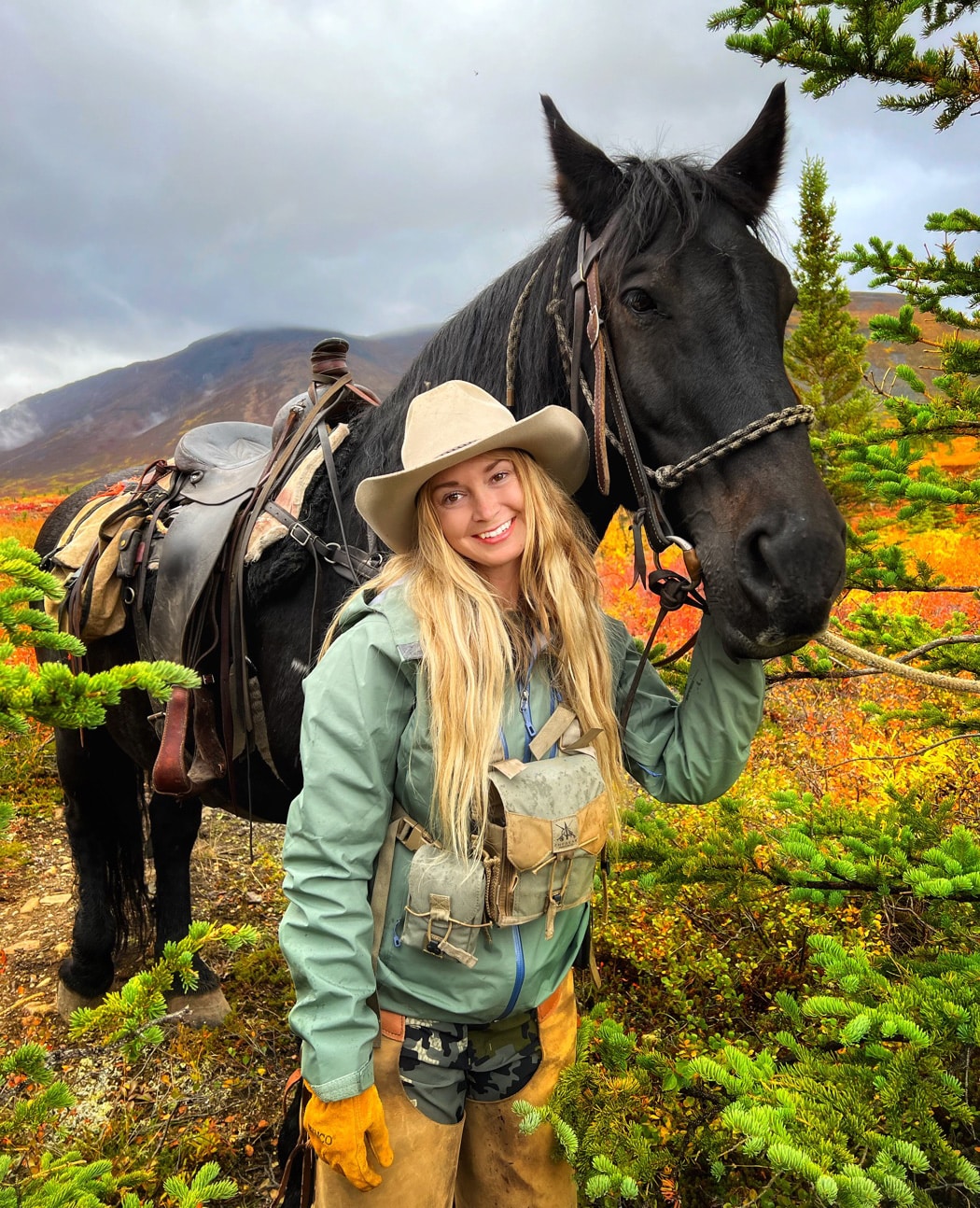
We did bump into some people who were packing their bull off on their backs, and it was a multi-day job for them. If you’re planning on doing this, make sure you have an exit plan for your meat. Most people hire bush plane transit services for drop camps and meat transportation.
We had another client later in the month tag out in a similar way. He harvested a slightly smaller bull with some great character and paddles. That pack out was much easier and faster, maybe because we had the experience of the previous bull under our belt and more daylight to spare!
Conclusion
Go into your guided or DIY moose hunt with everything planned beforehand. Know where you’re going to camp, how you’re going to get there, where you’re going to hunt, how you’re going to get the meat out and where you’re going to get the meat processed. Have a good satellite messaging device to communicate with the necessary people while you’re in the backcountry. Spend the time and money getting good gear, with an emphasis on the rain gear! Most importantly, always have your sidearm on your hip and be alert for grizzly bears — and be trained with it.
If you have a successful hunt, you’ll be rewarded with some of the most delicious, free-range, organic meat on the planet. Did I say “some?” I should say get ready to buy an extra chest freezer because you walk away with TONS of moose meat! Shoot straight my friends, and good luck out there! If you are looking for a guide, please contact us at dixietopoutfitters@gmail.com to book your dream hunt.
Editor’s Note: Please be sure to check out The Armory Life Forum, where you can comment about our daily articles, as well as just talk guns and gear. Click the “Go To Forum Thread” link below to jump in and discuss this article and much more!
Join the Discussion
Continue Reading
Did you enjoy this article?

 288
288





